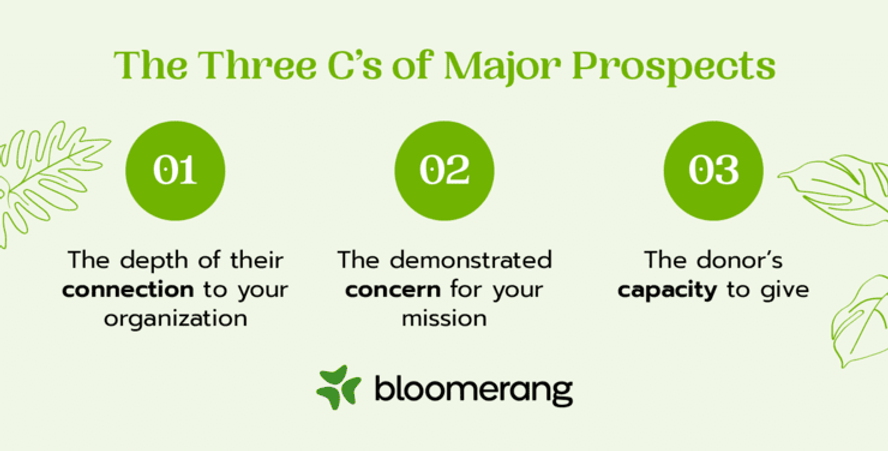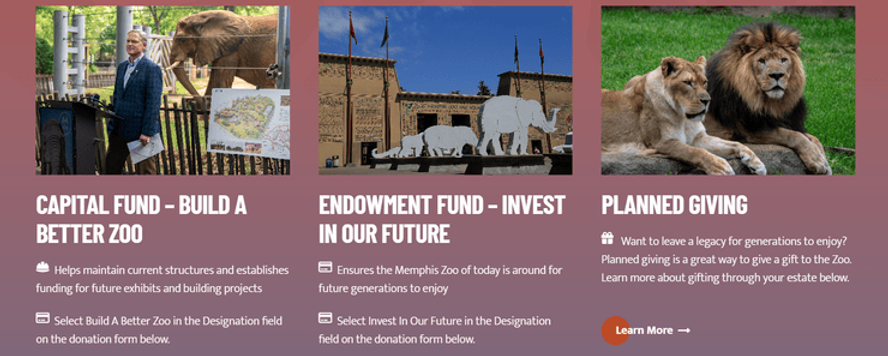Authors: Bloomerang and Giving Docs
What if the key to unlocking your nonprofit’s long-term financial stability wasn’t your next fundraising event but a quiet decision made by a loyal donor years ago?
Planned giving isn’t just about the future; it’s the most overlooked power move in your fundraising strategy today. You shouldn’t treat it as something separate from annual fundraising. Instead, your nonprofit should encourage planned giving in its typical appeals.
When effectively integrated into your overarching fundraising approach, planned giving increases donor lifetime value, deepens supporter relationships, and creates a diversified revenue stream that sustains your mission for years to come. If properly stewarded, donors who join legacy societies and share bequest intentions may increase giving while they are alive. Even more compelling is when a donor includes your organization in their will or trust, their annual giving can increase by around 75%.
Read below to learn actionable strategies to incorporate planned giving into your annual fundraising plan, so your nonprofit can start building a stronger future starting right now.
Assess your current fundraising strategy.
Before adding planned giving to your annual fundraising plan, it’s important to take an inventory of where your planned giving program realistically stands and where the greatest opportunity for impact lies. Review your fundraising activities, including annual campaigns, major donor outreach, events, and stewardship touchpoints. Ask yourself:
- Where could planned giving naturally fit in? Could you add a brief message about legacy gifts in your end-of-year appeal? Would a story about a bequest resonate in your donor newsletter?
- Are you nurturing long-term donor relationships? Look for ways to deepen engagement beyond one-time donations. Are you reaching out to your long time donors and asking them their “why”? Getting a donor to talk about their connection to your mission is often the key to unlocking committed relationships and bigger gifts down the line.
By analyzing your existing fundraising strategy through the lens of planned giving, you can identify natural opportunities to weave in messaging about this type of giving without overhauling your existing communication strategies.
Identifying planned giving prospects
Your donor database holds valuable insights into prospective planned giving donors. Look at supporters who have made unique giving choices (e.g., DAF giving, QCDs, beneficiary designations), indicating that they have the wherewithal to also consider a legacy gift. You may also notice engagement in specific programs and campaigns or patterns in their giving history that you can use when approaching a planned giving conversation.
Additionally, certain donor groups may be more likely to consider planned gifts, such as consistent donors, long-time volunteers, members of your recurring giving program, major donors with significant giving capacity, and older donors who might be open to legacy conversations. When researching candidates, Bloomerang’s major gift fundraising guide suggests looking at the three C’s:

- The depth of their connection to your nonprofit
- The demonstrated concern for your mission
- The donor’s capacity to give
While not every planned gift will come from a major donor, these principles can guide your prospect research, help prioritize your outreach, and deepen relationships with those most likely to leave a lasting impact.
Create annual goals for your planned giving program.
A successful planned giving program doesn’t happen by chance. It requires clear goals and measurable progress. Incorporating planned giving into your annual fundraising plan starts with defining realistic objectives aligned with your broader fundraising goals.
Consider objectives like increasing the number of planned giving inquiries, securing new planned giving commitments, increasing awareness among donors who have given for five or more years, a target number of planned giving appeals per year, and growing your legacy society membership each year.
From here, define key performance indicators (KPIs) to measure progress, such as the number of:
- Hand raisers or planned giving inquiries
- Planned giving visits or conversations by officers
- New planned gift commitments
- Messaging to donors about planned giving
- Annual visits, calls, and letters to donors
- Newsletter and planned giving information campaigns
- Members in your legacy giving society
Leverage your nonprofit software to measure progress, whether you’re tracking donor inquiries and visits, logging new planned gift commitments, or monitoring the growth of your legacy giving society.
Use your constituent relationship management (CRM) platform to tag donor communications that reference planned giving. This will help you analyze which messages and events drive the most engagement. Consider adding relationship tags such as legacy society member, bequest intention, or others related to moves management to reflect a donor’s stage in the planned giving process. Regularly reviewing this data will enable your team to refine strategies and demonstrate the long-term impact of your planned giving efforts.
Provide educational resources.
Planned giving can often feel daunting for donors. Make it easier by offering easy to digest, accessible information.
You might host informational sessions or webinars to explain giving options. Your nonprofit’s website is also a fantastic place to weave in mentions of planned giving messaging. Create a dedicated webpage that breaks down the different types of planned gifts your organization accepts, such as bequests, qualified charitable distributions (QCDs), donor-advised funds (DAFs), and charitable gift annuities. A legacy society page with quotes from donors sharing why leaving a legacy is important to them is another great way to draw attention to planned giving.
Remember to highlight the benefits of planned giving options for donors. Planned giving is unique in that many of the ways people give are based on tax advantages of gifting appreciated assets and potentially generating income for life while supporting your organization.
Link to these pages across communications, your site’s navigation menu, and your “Ways to Give” page. For those who prefer physical resources, convey the same information in a brochure.
Once your resources are ready, send them directly to prospects. Within your donor database, track who you’ve given these resources to and who’s expressed interest in response. You can even track who opens and clicks on this outreach if you have a CRM with that capability. You’ll also want to train frontline fundraisers to identify planned giving opportunities and direct prospects to the appropriate resources.
Integrate planned giving into donor communications.
Marketing is a pivotal part of securing planned gift commitments. For instance, The Central Park Conservancy promoted its Giving Docs landing page across several channels—including newsletters, acknowledgment letters, and emails. They also partnered with Giving Docs to make it easier for donors to create estate plans that include The Conservancy. By employing a surround-sound marketing strategy, they secured 13 completed gifts with an estimated value of $782,600.
Try this approach for yourself by incorporating planned giving mentions into different marketing collateral. You might:
- Add planned giving messaging to existing fundraising appeals (postscripts are high-impact) and newsletters
- Feature donor stories and testimonials about planned gifts on your website and social media to motivate donors with social proof
- Leverage annual campaigns and special giving days to promote planned giving
- Feature planned giving on your donation page and “Ways to Give” page
Kindful’s donation page guide provides a great example of how easy it is to incorporate planned giving messaging into existing communications. The Memphis Zoo’s donation page features planned giving alongside other ways to support the zoo, such as contributing to its capital campaign and endowment fund.

Mentions of planned giving don’t have to be complicated. Assess your current communications and consider where planned giving will fit into your everyday fundraising efforts.
Key moments—like Make A Will Month (August) or National Estate Planning Awareness Week (October)—offer natural opportunities to highlight legacy giving. Aligning your messaging with relevant national campaigns can boost engagement while reinforcing the idea that planned giving is a meaningful and accessible way for supporters to leave a lasting impact.
Integrating planned giving into your annual fundraising strategy doesn’t have to be a huge project. It starts with small, intentional steps. Even if your current fundraising plan is already in motion, look for simple ways to weave planned giving into your existing donor outreach—whether it’s a mention in an appeal, a story in your newsletter, or a conversation with a loyal supporter.
Start small, build momentum, and over time, planned giving will become a natural part of your fundraising strategy. You’ll develop deeper, more authentic relationships with your donors, while also ensuring a pipeline of sustainability to support your organization’s mission for generations to come.




